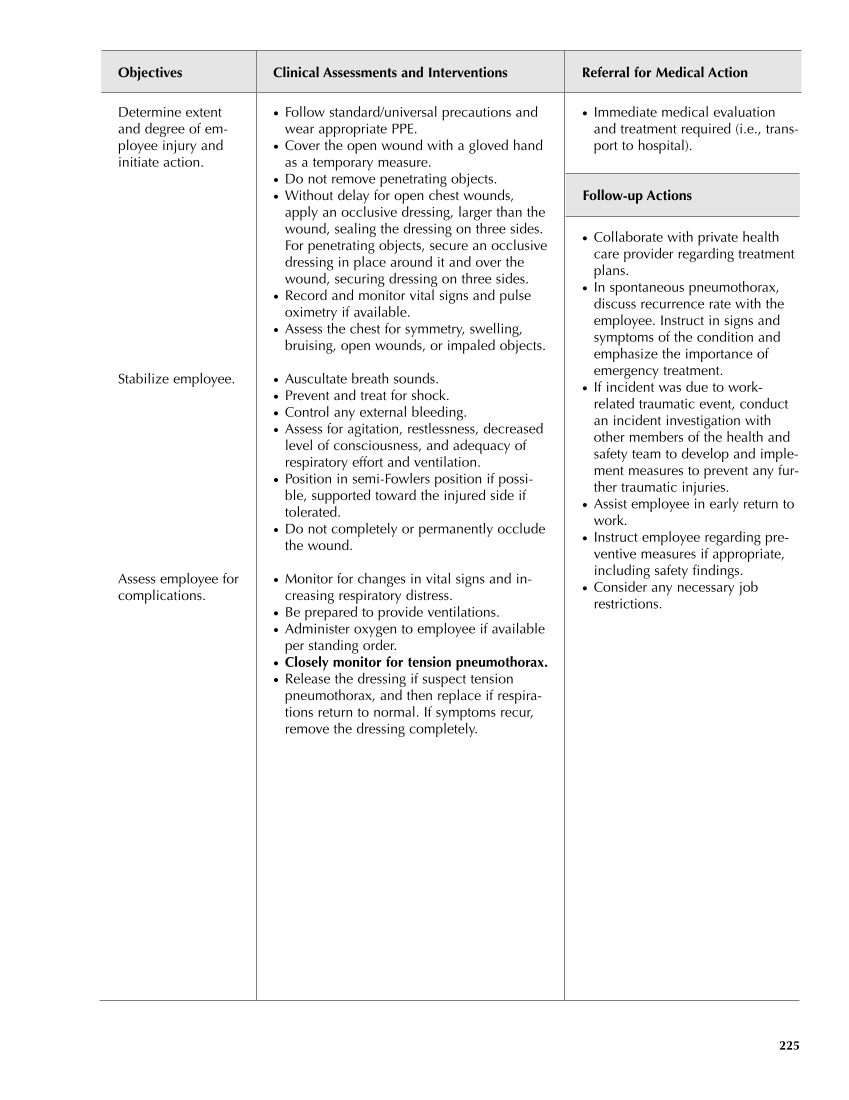● Immediate medical evaluation and treatment required (i.e., trans- port to hospital). Follow-up Actions ● Collaborate with private health care provider regarding treatment plans. ● In spontaneous pneumothorax, discuss recurrence rate with the employee. Instruct in signs and symptoms of the condition and emphasize the importance of emergency treatment. ● If incident was due to work- related traumatic event, conduct an incident investigation with other members of the health and safety team to develop and imple- ment measures to prevent any fur- ther traumatic injuries. ● Assist employee in early return to work. ● Instruct employee regarding pre- ventive measures if appropriate, including safety findings. ● Consider any necessary job restrictions. Objectives Clinical Assessments and Interventions Referral for Medical Action 225 Determine extent and degree of em- ployee injury and initiate action. Stabilize employee. Assess employee for complications. ● Follow standard/universal precautions and wear appropriate PPE. ● Cover the open wound with a gloved hand as a temporary measure. ● Do not remove penetrating objects. ● Without delay for open chest wounds, apply an occlusive dressing, larger than the wound, sealing the dressing on three sides. For penetrating objects, secure an occlusive dressing in place around it and over the wound, securing dressing on three sides. ● Record and monitor vital signs and pulse oximetry if available. ● Assess the chest for symmetry, swelling, bruising, open wounds, or impaled objects. ● Auscultate breath sounds. ● Prevent and treat for shock. ● Control any external bleeding. ● Assess for agitation, restlessness, decreased level of consciousness, and adequacy of respiratory effort and ventilation. ● Position in semi-Fowlers position if possi- ble, supported toward the injured side if tolerated. ● Do not completely or permanently occlude the wound. ● Monitor for changes in vital signs and in- creasing respiratory distress. ● Be prepared to provide ventilations. ● Administer oxygen to employee if available per standing order. ● Closely monitor for tension pneumothorax. ● Release the dressing if suspect tension pneumothorax, and then replace if respira- tions return to normal. If symptoms recur, remove the dressing completely. Guideline continues on next page
Purchased from OEM Press by (ge corporate access). (C) 2013 OEM Health Information, Inc. All rights reserved.












































































































































































































































































































































































































































